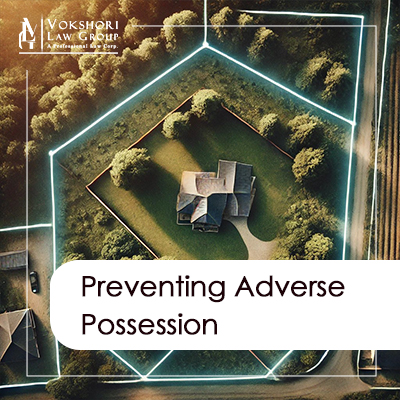
If you own property in Los Angeles or anywhere else in California, it’s crucial to be aware of adverse possession. This legal concept can potentially allow a trespasser to claim ownership of your property if specific legal requirements are met. Understanding how adverse possession works and how to prevent it is essential for safeguarding your real estate assets.
What is Adverse Possession?
Adverse possession is a legal doctrine that permits a trespasser to potentially gain legal ownership of another person’s property. Under California law, this concept is governed by a combination of statutes and case law. The primary statute governing adverse possession in California is found in the California Code of Civil Procedure Sections 318, 319, 321, and 325. These statutes outline the legal requirements that must be met for a claim of adverse possession to succeed.
California courts have also interpreted these statutes in numerous cases, establishing the legal framework for how adverse possession claims are evaluated. For instance, in Nash v. Sutter County Land Co., 188 Cal. 104 (1922), the California Supreme Court emphasized the necessity of meeting all statutory requirements before a claim of adverse possession can be recognized.
If you believe someone is attempting to claim your property through adverse possession, it’s critical to consult with an experienced real estate litigation attorney to explore your legal options.
Legal Requirements for Adverse Possession in California
To successfully claim adverse possession in California, a trespasser must satisfy a set of strict legal requirements. Specifically, the trespasser’s possession of the property must be:
- Actual: The trespasser must physically occupy the property, such as by building a structure, farming, or making other improvements.
- Open and Notorious: The occupation must be visible and obvious, so the property owner has the opportunity to notice the trespasser’s presence.
- Hostile: The occupation must be without the permission of the property owner. In California, “hostile” doesn’t imply animosity, but rather that the possession is without the owner’s consent.
- Continuous for Five Years: The trespasser must possess the property without interruption for a period of at least five consecutive years.
- Under a Claim of Right or Color of Title: The trespasser must either have a good faith belief that they have the right to the property (claim of right) or possess some form of defective document that purports to convey title (color of title).
- Payment of Property Taxes: The trespasser must have paid all property taxes on the property for five consecutive years. This requirement is codified in the California Code of Civil Procedure Section 325.
These requirements must be proven by “clear and convincing” evidence, a standard established in cases such as Traeger v. Friedman, 198 Cal. 511 (1926).
The Burden of Proof in Adverse Possession Claims
The burden of proof in an adverse possession claim lies with the trespasser. The legal title holder is presumed to be the rightful owner until the trespasser can produce sufficient evidence to meet all of the above requirements. California courts have consistently held that adverse possession is disfavored, meaning the requirements must be strictly construed against the party seeking to establish title by adverse possession (Gilardi v. Hallam, 30 Cal.3d 317, 1981).
If a trespasser attempts to claim your property, a real estate litigation attorney can file an action to “quiet title.” This legal process allows the court to formally determine the rightful ownership of the property, thereby removing any cloud on the title created by the adverse possession claim.
Adverse Possession vs. Easements
It’s important to distinguish between adverse possession and easements. While adverse possession can result in a change of ownership, an easement grants a right to use another person’s property without transferring ownership. Easements can be created by express agreement or by necessity, but they do not give the easement holder the right to exclude the property owner or others from the property. Understanding this distinction is crucial when dealing with property disputes.
Preventing Adverse Possession
Property owners in California can take proactive steps to prevent adverse possession claims:
- Routine Monitoring of Your Property: Regularly inspect your property to ensure that no unauthorized individuals are occupying it. Early detection of trespassers can help prevent adverse possession from taking root.
- Setting Clear, Transparent Boundaries: Clearly mark the boundaries of your property using fences, walls, or signage. This helps prevent encroachment and establishes the limits of your ownership.
- Paying Property Taxes Promptly: Make sure you pay your property taxes on time. Since one of the requirements for adverse possession is the payment of property taxes by the trespasser, your timely payments can help thwart their efforts.
Have Questions? Contact An Experienced Real Estate Litigation Attorney Today
If you’re a property owner in California facing an adverse possession claim or simply want to take steps to protect your property, the Vokshori Law Group can help. Our team of experienced real estate lawyers is well-versed in California property law and can provide the guidance you need to safeguard your rights.
For more information or to schedule a consultation, please contact Vokshori Law Group at (855) 855-2608 or visit www.VokLaw.com to learn more.






